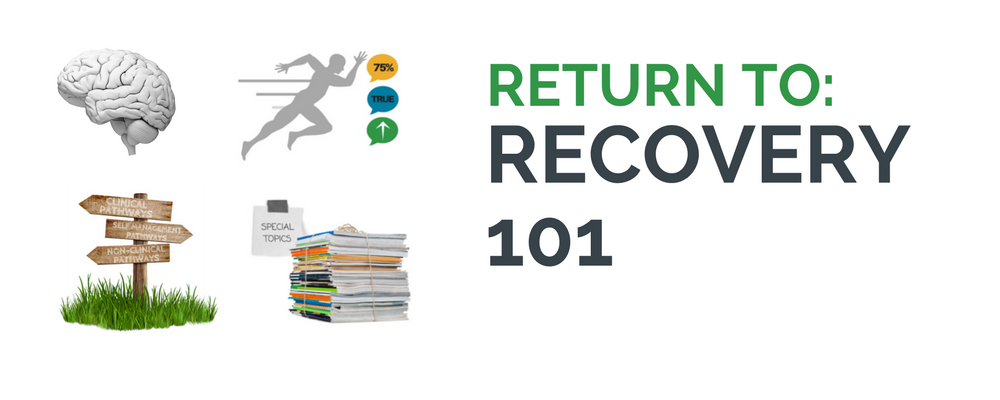
Recovery Technology Guide
Technology is increasingly being used to overcome logistical barriers frequently encountered when accessing recovery supports.
Such barriers typically focus on time & money.
- MONEY not only concerns the actual cost of the offered service to the person receiving the support, which can be free for many services (e.g., mutual help groups, recovery community centers), but also incidental costs, such as transportation costs, or costs involved in covering childcare and other caregiving responsibilities, so that the person is freed up to attend meetings and treatment sessions.
- TIME also does not simply concern the overall length of the meeting or session, but also the flexibility with which meetings and sessions can be scheduled (e.g., how far in advance) and when they can occur (e.g., after business hours).
Distance to treatment centers or mutual help meeting places further impact both money and time commitments, thereby making many services less accessible in more rural communities.
Through the use of technology, these logistical barriers can be substantially lessened, as computers, cellphones and smartphones (m-health) can be used to access emerging, technology-delivered treatment and support services whenever and wherever a person chooses.
DIFFERENT TECHNOLOGIES & HOW THEY SUPPORT RECOVERY
INTERNET-BASED SERVICES
Internet-based services can take many shapes, but the technology requirement is simply that one needs to be able to access the internet. Any type of device will do (e.g., tablet, smartphone, desktop, laptop), though it is typically best to use a device with a relatively large screen, and to be ready to spend some time with the tool. These internet-based services seek to emulate in-person forms of supports. Thus, there are both online formal treatment programs that deliver support in a sequence of clinician-prepared sessions, and online mutual help groups that offer online meetings and discussion boards to connect persons in recovery or seeking recovery with each other.
Virtually nothing is known empirically about the effectiveness of online mutual help group participation. (There is, however, a fairly robust evidence base on the effectiveness of in-person mutual help group participation.) Computer-delivered interventions meanwhile have been found to be effective, more so for alcohol than tobacco outcomes.1 Unfortunately, it is not easy to find publicly available validated computer-delivered treatments, as the scientific process of developing and testing an intervention is lengthy, and public dissemination is not typically built into these academic endeavors.
Examples: Online Programs
- “Checkup & Choices” is a web app that presents information in a series of modules to help participants reduce alcohol related problems, increase abstinence, and/or decrease the number of drinks. The program is not associated with any specific formal treatment program, and thus is publically accessible. There is a subscription fee for a 3-month or 12-month program.
- “VetChange” is a free, confidential online program to help veterans cut back or stop drinking. Research has shown that participation in this program has led to improvements in drinking (regardless of choosing abstinence or moderation as the drinking goal2, though severity of drinking impacted outcomes, as discussed in our Bulletin article on this study).
Examples: Online Mutual Help Groups and/or Meetings
- Alcoholics Anonymous (AA): Several websites exist that provide access to online AA meetings. These meetings can be accessed in a variety of formats, including via phone, text-messaging, email, and audio-video meetings as well as in the form of online discussion forums.
- SMART Recovery Online: SMART Recovery, the largest secular alternative to 12-step mutual help groups, offers online meetings. Meetings are typically 1.5 hours long, and are conducted either via voice or text chat (no video).
- InTheRooms (ITR): In the Rooms is a social network site devoted to supporting individuals in or seeking recovery for substance use problems. There is no in-person counterpart for this organization. In The Rooms offers a variety of services (for free), including live online video meetings, most but not all of which are based on the 12-step philosophy.
M-HEALTH & TEXT-MESSAGING SUPPORT
Unlike internet-based services, which seek to emulate in-person encounters, m-health (mobile health) or text-messaging services are designed for the specific advantage this type of technology offers for real-time interaction. Typically, a series of automated messages are sent to participants to provide tips and to support motivation, as participants navigate the challenges of behavioral change. Oftentimes, two-way interaction is also enabled, where participants can use specific keywords to receive support for specific issues or to request additional information. Services differ in terms of how many messages per day are sent, for how many weeks, and/or by the range of topics tailored feedback is provided for.
While there is a robust evidence base for the effectiveness of m-health and text-messaging services to support smoking cessation3 and medication adherence,4 fewer such interventions have been developed for alcohol and other substance use. Here, efforts have focused on preventing binge drinking in young adults, as recruited on college campuses5 or during visits to emergency rooms.6 The public availability is thus also more limited for text messaging services supporting recovery from substance use. For smoking cessation, the National Cancer Institute provides the free service SmokefreeTXT. An equivalent for substance use self-management does not exist (at this time). Several universities, however, are starting to offer such services for free to students to help them reduce alcohol-related consequences (e.g., Penn State is using the empirically-supported CaringTXT intervention).6
SMARTPHONE APPS TO SUPPORT RECOVERY
At present, smartphones do not yet have quite the reach that cellphones have, as fewer people own smartphones than cellphones, at least within the US (95% vs. 77%, based on 2017 estimates by the Pew Research Center). Smartphones do, however, have greater functionality than cellphones. Such functionality can be leveraged to enhance participant interactions with interventions, as research (in smoking cessation) suggests that increased tailoring of smartphone apps is related to app popularity and number of downloads.7
As smartphones are also increasingly relied upon as a household’s sole access to the internet,8 they will undoubtedly play an important role in the delivery of m-health recovery support in the future. At present, very few empirically-tested apps exist to support recovery from problematic alcohol or drug use.9
Meanwhile, there is a proliferation of publically available apps appearing in the iTunes and Googleplay stores.
Content analyses of such apps indicate that the majority of these m-health apps (62%) are “coping / self-control” apps, largely blood alcohol content (BAC) estimators and self-monitoring apps, that track user’s quit date, followed by “motivational counseling” apps ( 23%), which typically focused on financial or caloric savings earned when not engaging in drinking.10 (Of note, the National Institute on Alcohol Abuse and Alcoholism (NIAAA)’s “Rethinking Drinking” website offers a variety of such calculators as well, albeit not in app format.
Research focusing on the quality of publically available alcohol apps further suggests that most blood alcohol content (BAC) apps were inaccurate,11 and that the overall quality remains poor.12 By and large, these apps rarely utilize empirically based behavior change techniques (other than self-monitoring), and the use of such techniques has been found to be only weakly associated with the app’s popularity and user ratings.13
Examples of empirically-informed m-health smartphone apps to support recovery
- “Step Away” is a smartphone app for the iPhone to support recovery from problematic alcohol use. It is designed as a stand-alone intervention, and is publically available via the iTunes Store. Recently published pilot findings were promising.14
- “A-CHESS” is a smartphone app that has been shown to be effective in a large-scale randomized trial.15 It is designed to provide continuing care following inpatient care, and is only accessible to individuals via their treatment facility.
- The Hazelden Betty Ford Foundation has developed several smartphone apps to enhance motivation and support recovery from substance use.
- CITATIONS
-
- Rooke S, Thorsteinsson E, Karpin A, Copeland J, Allsop D. Computer‐delivered interventions for alcohol and tobacco use: a meta‐analysis. Addiction. 2010;105(8):1381-1390.
- Enggasser JL, Hermos JA, Rubin A, et al. Drinking goal choice and outcomes in a Web-based alcohol intervention: results from VetChange. Addict Behav. 2015;42:63-68.
- Whittaker R, McRobbie H, Bullen C, Rodgers A, Gu Y. Mobile phone-based interventions for smoking cessation. Cochrane Database Syst Rev. 2016;4:CD006611. doi: 10.1002/14651858.CD006611.pub4
- Thakkar J, Kurup R, Laba TL, et al. Mobile Telephone Text Messaging for Medication Adherence in Chronic Disease: A Meta-analysis. JAMA Intern Med. 2016;176(3):340-349. doi: 10.1001/jamainternmed.2015.7667
- Bock BC, Barnett NP, Thind H, et al. A text message intervention for alcohol risk reduction among community college students: TMAP. Addict Behav. 2016;63:107-113. doi: 10.1016/j.addbeh.2016.07.012
- Suffoletto B, Kristan J, Callaway C, et al. A text message alcohol intervention for young adult emergency department patients: a randomized clinical trial. Ann Emerg Med. 2014;64(6):664-672 e664. doi: 10.1016/j.annemergmed.2014.06.010


